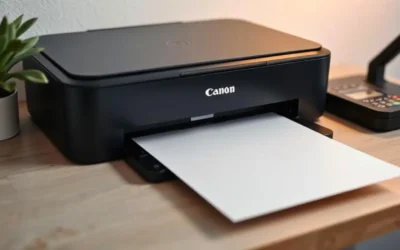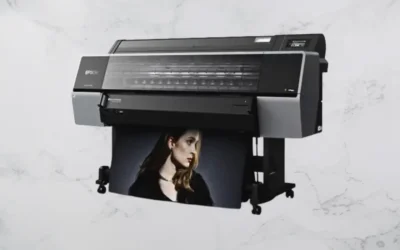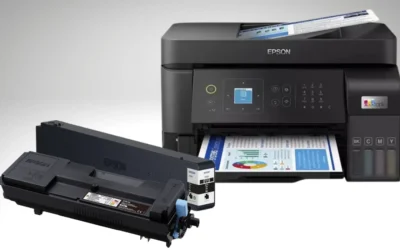Ultimate Guide to Printer Ink and Toner: Save Money and Boost Print Quality!
If you’re constantly replacing your printer ink or toner and struggling to keep up with the costs while ensuring high-quality prints, you’re not alone. In this ultimate guide, we will walk you through the essential details about printer ink and toner, helping you save money while enhancing print quality. From selecting the right products to maintenance techniques that extend the life of your cartridges, this guide will ensure you get the most out of your printing experience.
What is the Difference Between Printer Ink and Toner?
Printer ink and toner serve different purposes and are used in distinct types of printers. Understanding the differences is essential for choosing the right product for your needs.
Printer Ink: For Inkjet Printers
Ink is a liquid used in inkjet printers. It’s sprayed onto paper through the printer’s printhead to create text and images. Ink cartridges usually come in black, cyan, magenta, and yellow, allowing printers to produce rich colors and sharp details. Inkjet printers are best suited for photo printing and documents requiring vibrant color.
Toner: For Laser Printers
Toner, on the other hand, is a fine powder used in laser printers. It’s melted and fused to paper using heat and pressure. Toner cartridges are commonly used in high-speed laser printers and photocopiers, making them ideal for office environments. They tend to be more cost-efficient than ink when it comes to printing large volumes of documents, and they produce sharp, precise text.
Types of Printer Ink and Toner
There are various types of ink and toner available, each designed to meet specific needs.
Ink Types for Inkjet Printers
Dye-based ink: Known for vibrant colors and deep shades, dye-based ink is water-soluble and creates smooth transitions in color. However, it may fade or smudge over time, making it less suitable for archival documents.
Pigment-based ink: This ink type consists of tiny particles that sit on top of the paper rather than being absorbed. Pigment-based inks are more durable and water-resistant, making them ideal for printing professional documents or archival materials.
Toner Types for Laser Printers
Standard toners: Suitable for everyday printing needs, these cartridges offer a balance of cost and efficiency.
High-yield toners: Designed for high-volume printing, these toners yield more pages and reduce the frequency of replacements, making them cost-effective for businesses with large print demands.
Color toners: Used in color laser printers, these cartridges contain different compartments for cyan, magenta, yellow, and black powders to produce vibrant color prints.
The Cost of Printer Ink and Toner
Printer ink and toner are often one of the most significant expenses for home users and businesses. Here’s a breakdown of costs:
Ink Cartridge Prices
Black ink cartridges: These range from $15 to $50 depending on the brand and printer model.
Color ink cartridges: Typically, color cartridges cost between $20 and $60.
Total cost: When you need to replace multiple cartridges (black and color), the total cost of ink can quickly add up.
Toner Cartridge Prices
Black toner cartridges: Typically range from $50 to $150.
Color toner cartridges: These can cost between $60 and $200 each.
Cost-per-page (CPP): While toner cartridges are more expensive upfront, they generally offer a lower cost-per-page compared to ink cartridges, making them more cost-effective for large-volume printing.
Calculating Cost-per-Page (CPP)
To determine the true cost of ink or toner cartridges, calculate the cost per page (CPP). Divide the cost of the cartridge by the number of pages it prints. This gives you a better understanding of long-term printing costs.
How to Choose the Right Ink or Toner?
Choosing the right ink or toner depends on various factors such as compatibility, print quality, and budget. Here are some tips:
1. Printer Compatibility
Ensure that the ink or toner you choose is compatible with your printer model. Using incorrect cartridges can lead to poor print quality or even damage your printer. Check the manufacturer’s website or the printer manual for compatible cartridge recommendations.
2. Printing Frequency
If you print frequently, opt for high-yield cartridges to reduce replacement frequency and lower costs in the long run.
3. Printing Type
Photo and color documents: Dye-based ink or color toner works best for vibrant color reproduction.
Black-and-white documents: Standard black ink or toner cartridges are sufficient.
4. Budget Considerations
While OEM cartridges offer the highest quality, they come at a premium price. If you’re looking for a more affordable option, consider third-party cartridges. However, be cautious and choose reputable brands to ensure print quality and printer longevity.
Tips for Extending the Life of Printer Ink and Toner
To save money on ink and toner, follow these maintenance tips:
1. Use Draft Mode for Less Important Documents
Print in draft mode for documents that don’t require high-quality prints. This mode uses less ink or toner, extending cartridge life.
2. Print in Grayscale
If you don’t need color, print in grayscale to conserve color ink or toner.
3. Optimize Document Layout
Minimize the use of heavy graphics and large color blocks in your documents to reduce ink or toner consumption.
4. Store Cartridges Properly
Store unused ink and toner cartridges in a cool, dry place. For ink cartridges, keep them sealed to prevent drying out. For toner cartridges, store them horizontally to prevent the powder from settling unevenly.
5. Regular Printer Maintenance
Perform regular maintenance, such as cleaning the printhead and rollers, to keep your printer running smoothly and avoid premature cartridge failure.
Generic vs. OEM Cartridges: Which is Better?
One key decision is whether to choose original equipment manufacturer (OEM) cartridges or generic alternatives. Here’s a comparison:
OEM Cartridges
OEM cartridges are produced by the printer’s manufacturer and are designed for optimal compatibility. While they provide reliable performance and high-quality prints, they tend to be more expensive.
Generic Cartridges
Generic or third-party cartridges are manufactured by companies other than the printer maker. These tend to be more affordable, but quality can vary. Reputable third-party brands offer cartridges that work well and produce good print quality, though it’s important to research and select a trusted supplier.
Storing Ink and Toner Cartridges Properly
Proper storage helps maintain the quality and longevity of your ink and toner cartridges. Follow these guidelines:
For Ink Cartridges
Store them in a cool, dry location away from direct sunlight.
Keep them sealed in their original packaging or in a resealable bag to prevent drying out.
For Toner Cartridges
Store toner cartridges horizontally to ensure even distribution of the toner powder.
Keep them in a cool, dry environment, away from heat and sunlight.
Recycling Ink and Toner Cartridges
Recycling your ink and toner cartridges helps protect the environment. Many printer manufacturers and office supply stores offer recycling programs where you can return empty cartridges for recycling. Some programs even offer discounts or rewards for returning used cartridges.
Refilling Cartridges
Consider refilling your cartridges as a cost-effective and eco-friendly alternative. Many stores offer refilling services, allowing you to reuse your old cartridges.
Conclusion: Make Smart Choices for Better Printing
Understanding the differences between printer ink and toner, along with how to extend their lifespan, helps you make smarter, more cost-effective printing decisions. By choosing the right cartridges, optimizing printing settings, and properly storing your cartridges, you can significantly reduce your printing costs. Don’t forget to explore recycling and refilling options to contribute to environmental sustainability. By making informed choices, you can enjoy high-quality prints without breaking the bank.



